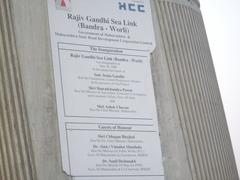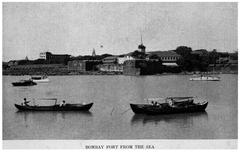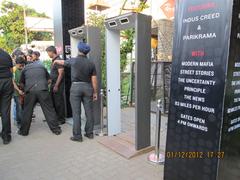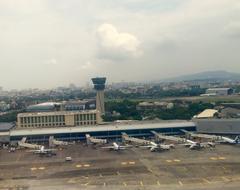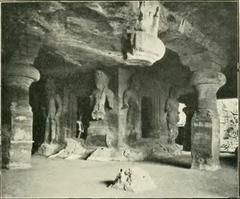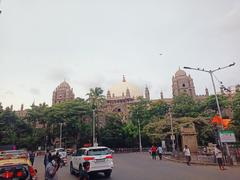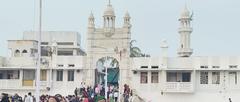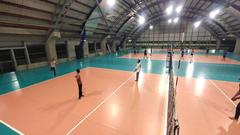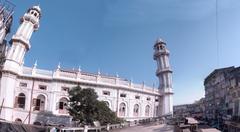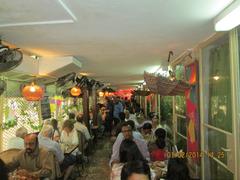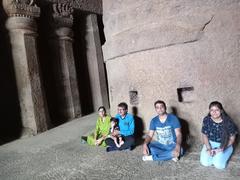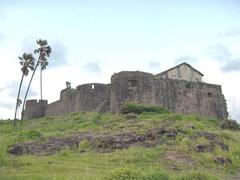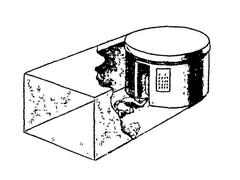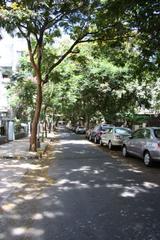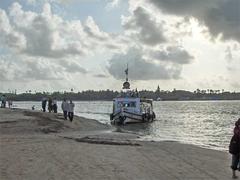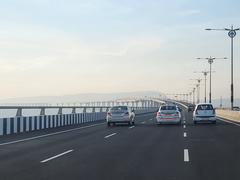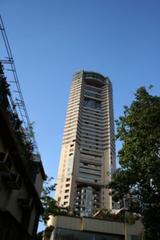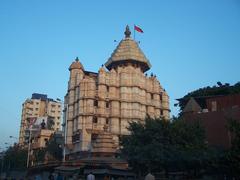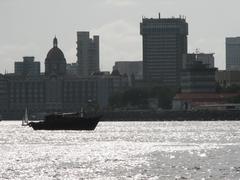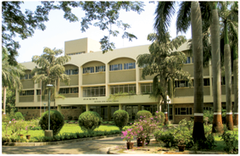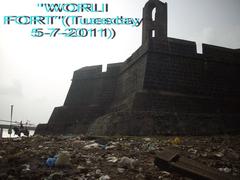Gateway of India Mumbai: Visiting Hours, Tickets, and Complete Visitor Guide
Date: 14/06/2025
Introduction
The Gateway of India, majestically poised at Apollo Bunder in Colaba, Mumbai, is more than just an architectural marvel—it is a living testament to the city’s historical evolution and cosmopolitan vibrancy. Originally constructed to commemorate the 1911 visit of King George V and Queen Mary, the monument has since become a symbol of Indian independence and cultural unity. This comprehensive guide covers the Gateway’s fascinating history, distinctive architecture, visiting hours, entry policies, accessibility, nearby attractions, and essential travel tips—ensuring you make the most of your visit to this iconic landmark.
For further historical context and practical guidance, refer to Mumbai Tourism, Incredible India, and Indian Classroom.
Table of Contents
- History and Significance
- Architectural Features
- Visiting Information
- Experiences & Attractions Nearby
- Culture, Events & Social Impact
- Frequently Asked Questions (FAQs)
- Summary & Key Points
- References & External Links
History and Significance
Origins and Colonial Era
The Gateway of India was conceived as a ceremonial entrance to India for colonial dignitaries (indianclassroom.com). Its foundation stone was laid in 1913 by Sir George Sydenham Clarke, the Governor of Bombay, to mark the 1911 visit of the British monarchs (wikipedia.org). Scottish architect George Wittet designed the monument in the Indo-Saracenic style, harmoniously integrating Hindu, Islamic, and European elements (incredibleindia.gov.in).
The monument’s strategic site at Apollo Bunder was selected for its proximity to the city’s main harbor, making it both a literal and symbolic “gateway” to the Indian subcontinent (guidetour.in).
Architectural Vision and Construction
Construction began in 1915, with delays caused by World War I and land reclamation at the waterfront. The structure was completed in 1924, using yellow basalt and reinforced concrete—a pioneering choice at the time (mumbailive.com). Upon its inauguration by Viceroy Rufus Isaacs, it stood as a symbol of British imperial authority, but its architectural fusion also subtly reflected Mumbai’s multicultural ethos.
Role in Independence
A pivotal moment in the monument’s history occurred in 1948, when the last British troops departed India through the Gateway, marking a tangible end to colonial rule (testbook.com). Since then, the Gateway has become a proud symbol of India’s sovereignty and Mumbai’s dynamic spirit.
Architectural Features
Design Elements
The Gateway soars to a height of 26 meters (85 feet) and features a central arch flanked by two smaller arches. Its façade is adorned with intricate floral patterns, latticework, and motifs of lions and elephants—symbols of strength and wisdom (guidetour.in). Four turrets, each capped with a small dome, draw inspiration from Mughal and Gujarati traditions, while the symmetry and grandeur are distinctly European (incredibleindia.gov.in).
Materials and Techniques
Yellow basalt from local quarries and reinforced cement concrete were used for durability and resilience against the coastal climate (mumbailive.com). The combination of traditional craftsmanship and modern techniques ensured the monument’s longevity (culturalindia.net).
Restoration and Conservation
Decades of exposure to salty air and pollution have necessitated regular conservation efforts. A major restoration project launched in 2023 aims to restore the monument’s splendor by 2025, involving cleaning, chemical treatments, and infrastructural improvements (mumbailive.com).
Visiting Information
Visiting Hours & Entry Fees
- Hours: Open 24 hours a day, 7 days a week (mumbaitourism.travel; trip101.com).
- Entry: Free for all visitors. No tickets are required for general access.
- Ferry Tickets: Separate tickets needed for boat rides to Elephanta Caves and other destinations, available at official counters.
How to Reach
- Location: Apollo Bunder, Colaba, South Mumbai.
- By Train: Nearest stations are Chhatrapati Shivaji Maharaj Terminus (CST) and Churchgate (2.5–3 km away).
- By Road: Accessible by taxi, ride-share, or local bus.
- By Ferry: Departs from the adjacent jetty for Elephanta Island and Alibaug (thomascook.in).
Accessibility
The Gateway’s plaza is wheelchair-friendly with ramps and paved pathways, though some areas may be crowded or uneven during peak times (mumbaitourism.travel). Public transport and parking are available nearby.
On-site Facilities & Travel Tips
- Restrooms: Available nearby; cafés often offer cleaner facilities.
- Food: Street food stalls and upscale dining at the Taj Mahal Palace Hotel.
- Shopping: Colaba Causeway for souvenirs and handicrafts.
- Safety: Security checks are mandatory. Stay aware of your belongings (trip101.com).
- Tips: Visit early morning or at sunset for pleasant weather; avoid touts selling fake tickets.
Experiences & Attractions Nearby
Boat Rides & Ferries
- Elephanta Caves: UNESCO World Heritage Site, 1-hour ferry ride from the Gateway.
- Speedboats & Sailing: Available for short sea excursions (thomascook.in).
Markets, Museums & Food
- Colaba Causeway: Bustling market for local goods and street food.
- Chhatrapati Shivaji Maharaj Vastu Sangrahalaya: Museum showcasing Indian history and art.
- Nearby Cafés & Restaurants: From street snacks to luxury dining.
Culture, Events & Social Impact
The Gateway is a focal point for public gatherings, festivals, and protests, symbolizing both Mumbai’s unity and diversity (eindiatourism.in). It is illuminated on national holidays and for special causes, and frequently appears in films, literature, and art (historytools.org). Nearby, the thriving market and food stalls support local livelihoods and reflect Mumbai’s dynamic street culture.
Frequently Asked Questions (FAQs)
Q: What are the Gateway of India visiting hours?
A: Open 24 hours, every day.
Q: Is there an entry fee?
A: No, entry is free. Ferry rides require separate tickets.
Q: How do I reach the Gateway of India?
A: By train (CST or Churchgate), taxi, bus, or ferry.
Q: Is the site wheelchair accessible?
A: Yes, with ramps and paved areas, though some surfaces may be uneven.
Q: Are there guided tours?
A: Yes, guided walking tours and private guides are available.
Q: What are must-see nearby attractions?
A: Elephanta Caves, Taj Mahal Palace Hotel, Colaba Causeway, and the Prince of Wales Museum.
Summary & Key Points
- Open 24/7, free entry.
- Best times: Early morning or sunset for cooler weather and fewer crowds.
- Accessibility: Wheelchair-friendly, but crowds and uneven surfaces may challenge some visitors.
- Nearby attractions: Taj Mahal Palace Hotel, Colaba Causeway, Elephanta Caves, museums.
- Experiences: Boat rides, photography, street food, shopping.
- Safety: Security checks are in place; be wary of touts and scams.
- Cultural hub: Venue for festivals, protests, and celebrations, reflecting Mumbai’s unity and diversity.
- Restoration: Ongoing conservation ensures the monument’s preservation for future generations.
For seamless travel planning and real-time updates, download the Audiala app and consult official tourism sources.
References & External Links
- Gateway of India: History, Visiting Hours, Tickets, and Mumbai’s Iconic Landmark Guide, Indian Classroom
- Gateway of India Visiting Hours, Tickets, and Architectural Highlights in Mumbai, Incredible India
- Gateway of India Visiting Hours, Tickets, and Cultural Significance in Mumbai, EIndia Tourism
- Gateway of India Visiting Hours, Tickets, and Guide to Mumbai’s Iconic Historical Site, Mumbai Tourism
- Gateway of India, Wikipedia
- Gateway Conservation Project to be completed by Feb 2025, Mumbai Live
- Gateway of India – History and Heritage, Testbook
- Gateway of India in Mumbai, GuideTour
- Gateway of India – A Monumental Testament to Mumbai’s Colonial Past and Cosmopolitan Present, History Tools
All information is current as of June 14, 2025. For the most up-to-date details, please refer to the official links above.
